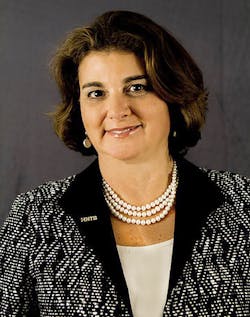In the wake of Election Day 2016, at least one clear winner has emerged: public transportation. There were a historic number of transit-related funding initiatives on ballots across the nation (49), of which about 70 percent passed. This impressive result means that there will be about $170 billion in new funding for systems that provide Americans with mobility options ranging from commuter and light-rail trains to subways, buses, and other transit services.
This show of voter support affirms a major shift in how the public views the role and benefits of public transportation. Until fairly recently, transit has been viewed predominantly through the lens of being a public service, operated to serve people who might have no other mobility options. Now, as the ballot successes show, more Americans see public transportation in a broader context: as an investment in economic growth, stronger businesses and a better quality of life — in addition to fulfilling its traditional role of providing basic mobility.
Why did so many millions of voters coast-to-coast say yes to public transportation? There’s no simple answer, but several key factors may be contributing to this phenomenon:
• Transit investments have demonstrated strong returns – When communities have backed comprehensive transit options, they’ve gained benefits that go far beyond transportation: Businesses thrive near transit stations, and commercial and residential real estate rises in value. This generates greater economic activity and jobs, while increasing the tax base. One illustration of this belief in economic benefits is in Los Angeles, where voters approved a 1/2-cent sales tax increase to fund $120 billion in transit expansion and operations over the next 40 years. Many Angelenos are beyond easy reach of these transit options, which suggests that their grasp of the system’s employment, economic and tax benefits is strong.
• People simply want more options for how they travel – It’s true that when more people take public transportation, it can reduce single-occupant vehicles on highways. But, the reality is that people really want choice, so they can determine for themselves the most convenient, fastest, most efficient way to get from Point A to Point B. Look at Washington State, where voters in King, Pierce and Snohomish Counties passed a measure that will deliver $54 billion over 25 years to build out their transit systems. The Seattle metropolitan area ranks among the most affluent in the nation, suggesting that people are not driven to transit to save money, but rather to enjoy broader, more convenient travel options.
• Rideshare options are creating vital links – What stops many commuters from taking advantage of transit options? Getting to and from the station in their cars, with the associated parking hassles. Now, with expanding rideshare services (and emerging ride-hailing and the potential for autonomous vehicle options) more people have a lower-stress, modestly priced way to connect home to station. This truly is a game-changer for public transportation. More broadly, the ability to combine ridesharing with transit gives more people, from Millennials to frugal Boomers, a way to buy transportation “as needed” rather than sustain a constant “oversupply” by owning, maintaining and garaging a personal vehicle.
• Transit helps put land to better use in urban centers — In many cities, square miles of land — whether horizontal or vertical in garages – are devoted to parking (experts estimate that, on average, most cars are parked about 95% of the time). What value can be generated by seas of idle vehicles in urban areas? When transit and rideshare options work in tandem, this can decrease demand for parking, thus freeing up land for more fruitful development, like shops, entertainment venues, apartments and other features that make for a vibrant city.
• Strong advocacy has made the difference — Public transportation is enjoying a renaissance due largely to the factors already discussed, but there is one more essential piece: leadership. As with any public investment, transit must vie with other priorities in the eyes of voters and politicians. There is always debate and, sometimes, division. Fortunately, across the country, we have seen very strong leadership among elected officials, transit CEOs, general managers, transit boards and others, which has helped to reframe the public’s understanding of transit’s role as a catalyst for economic vitality and improved quality of life. By voting for massive transit investments, the public is showing its faith that leaders will spend money wisely, operate an effective system, and continue to envision and create ever-more-valuable options.
Ultimately, public transportation is all about choice in how you travel — yes, it’s about mobility, but it’s also about freedom. Across the nation, voters have signaled that they are ready for a new era of broader transit options. It’s up to all of us to design a public transportation system that can play an integral role in shaping the future of our nation and our economy.
Diana Mendes is senior vice president and national transit/rail practice leader at HNTB Corp. With 30 years of comprehensive experience in transportation and public transit, Mendes is responsible for strategic planning and implementation, business development, and delivery of various high-profile transit projects for HNTB.



